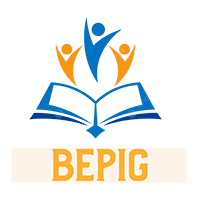A loan is a provision of money, property, or other valuables from one party to another, with the understanding that the recipient will repay the loan’s value over time, often with added interest. This is a central financial mechanism that allows individuals, businesses, and even governments to gain access to capital for various objectives, from covering personal needs to facilitating business expansion. However, a thorough understanding of how loans operate is essential to utilize them successfully and prevent potential financial difficulties.
Understanding the Basics of Loans

Fundamentally, a loan is a form of debt accepted by a person or organization. A lender, typically a financial institution or a government body, offers a specific sum to the borrower. The borrower then agrees to abide by certain conditions, including charges, interest rates, and a specified repayment schedule. This process usually includes an application, a creditworthiness assessment, and a legally binding agreement outlining all pertinent details.
Key Components of a Loan:
- Principal: The initial amount borrowed.
- Interest: The fee charged for borrowing, typically shown as a yearly percentage.
- Term: The total time allowed for the borrower to repay the loan.
- Collateral: An asset pledged as security. If the borrower fails to repay, the lender can claim this asset.
- Fees: Extra costs associated with the loan, like setup fees or penalties for late payments.
Types of Loans
Loans vary, each tailored for specific situations and requirements:
- Secured Loans: Supported by collateral, like a home or car. If payment obligations are unmet, the lender can seize the asset. Due to reduced lender risk, these often have more favorable interest rates.
- Unsecured Loans: Not supported by collateral. Lenders depend on the borrower’s credit history and ability to repay. These carry more risk for lenders, resulting in higher interest rates.
- Revolving Loans: Allow repeated borrowing and repayment, up to a set limit. Interest applies only to the outstanding balance.
- Term Loans: Provide a set sum repaid over a fixed period with scheduled payments.
- Home Loans: Specifically for purchasing property, using the property as security.
- Student Loans: Designed to cover educational expenses, often with lower interest and flexible repayment options.
- Business Loans: For entrepreneurs starting or expanding businesses, including options for smaller ventures, equipment, and credit lines.
- Vehicle Loans: Used to purchase vehicles, potentially secured depending on credit and lender policies.
The Loan Process

The process typically involves:
- Application: Submission to a lender with details on income, employment, assets, and credit history.
- Credit Evaluation: Review of credit history and repayment capability.
- Approval: Offer of a loan agreement, detailing terms like interest and repayment schedules.
- Acceptance: Agreement to the terms by signing the contract.
- Disbursement: Release of funds to the borrower.
- Repayment: Repaying the loan according to the agreed schedule.
Factors Affecting Loan Approval and Interest Rates
Lenders consider several aspects when evaluating loan applications:
- Credit Score: A measure of creditworthiness, where a better score can lead to better loan terms.
- Income: Lenders need assurance of repayment ability.
- Debt-to-Income Ratio: Compares debt payments to income, with lower ratios being more favorable.
- Collateral: Affects approval and rates, especially for secured loans. Lenders favor easily valued collateral.
- Loan Purpose: Influences terms; loans for essentials might have better terms than those for discretionary expenses.
Strategies for Smart Borrowing
Responsible borrowing requires:
- Assess Your Needs: Determine the exact amount you require to avoid unnecessary costs.
- Check Your Credit Score: Understand your creditworthiness to secure better terms.
- Compare Loan Options: Look at offers from multiple lenders to find the best fit.
- Understand the Total Cost of the Loan: Consider fees alongside interest rates.
- Choose the Right Repayment Term: Align the repayment schedule with your budget and financial goals.
- Read the Fine Print: Understand all conditions before committing.
- Borrow Only What You Can Afford: Ensure you can comfortably repay the loan.
- Make Payments on Time: Maintain a good credit score and avoid late fees.
The Rise of DeFi Lending

Decentralized Finance (DeFi) is an innovative financial space leveraging blockchain to automate lending, offering potential benefits like:
- Accessibility: Easier access without strict credit checks.
- Transparency: Transactions are recorded on a public ledger.
- Automation: Reduces costs through automated processes.
However, risks include:
- Volatility: The value of cryptocurrencies can fluctuate.
- Security: Platforms are susceptible to hacking.
- Regulation: Regulatory uncertainty adds risk.
Also Read : Loans Demystified: Everything You Need To Know Before Borrowing
Conclusion
Loans can be a significant asset when handled carefully. It is essential to educate yourself and make informed decisions by understanding loan mechanisms, evaluating options, and only borrowing within your means. Whether considering a personal, home, or business loan, thoughtful planning is critical. Moreover, understanding the opportunities and risks of DeFi lending is important. These smart borrowing habits will help you manage debt effectively and leverage financial opportunities successfully.



